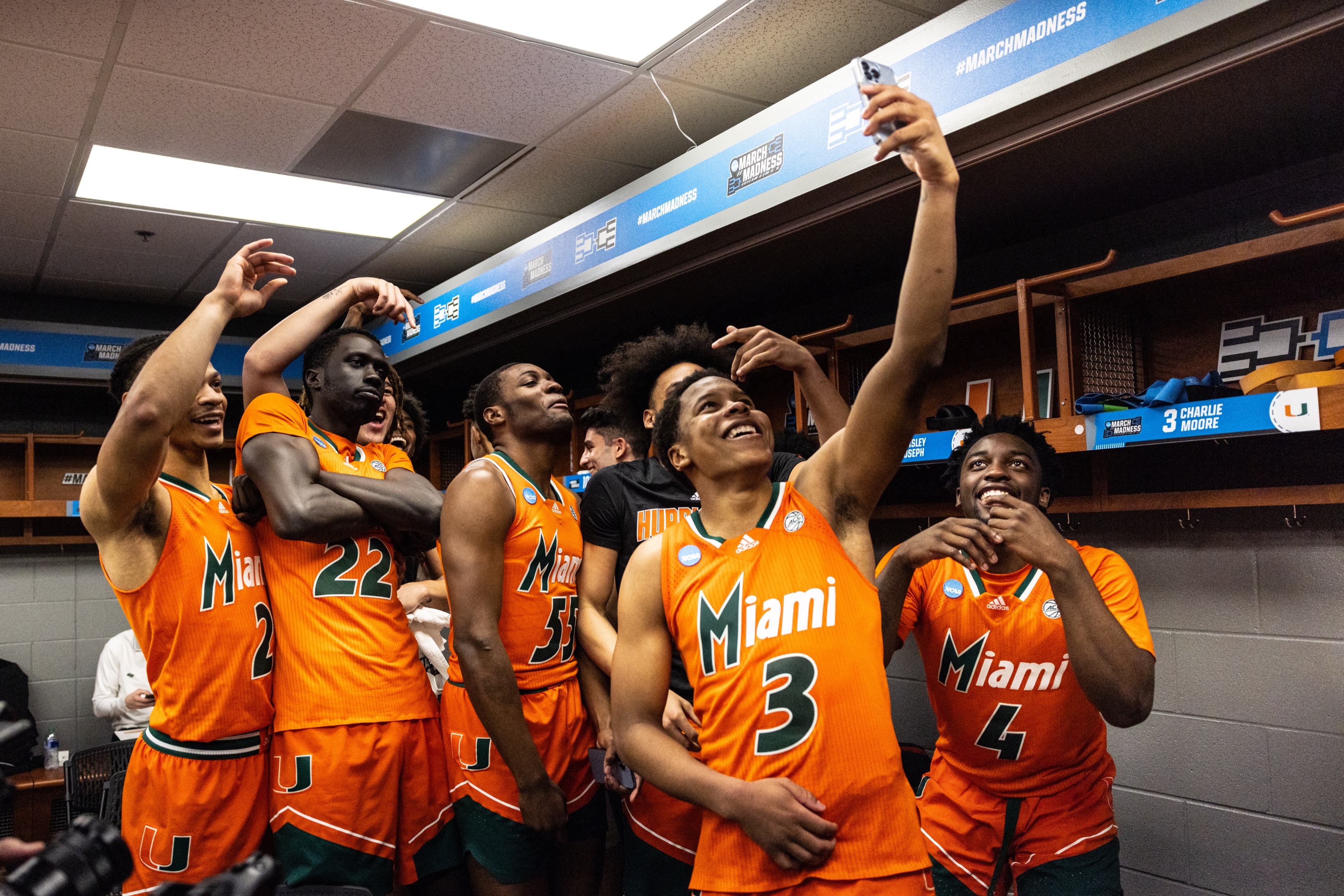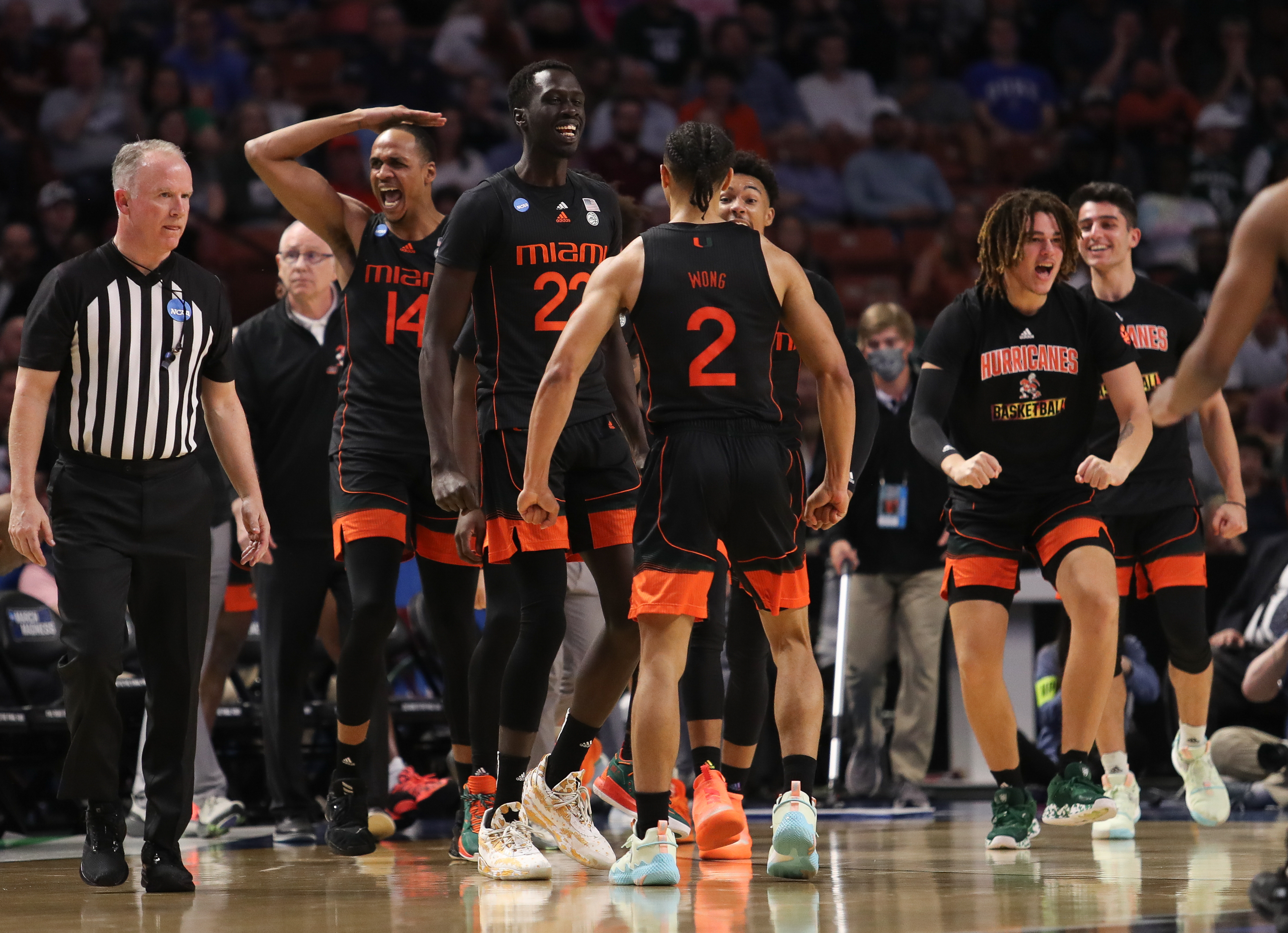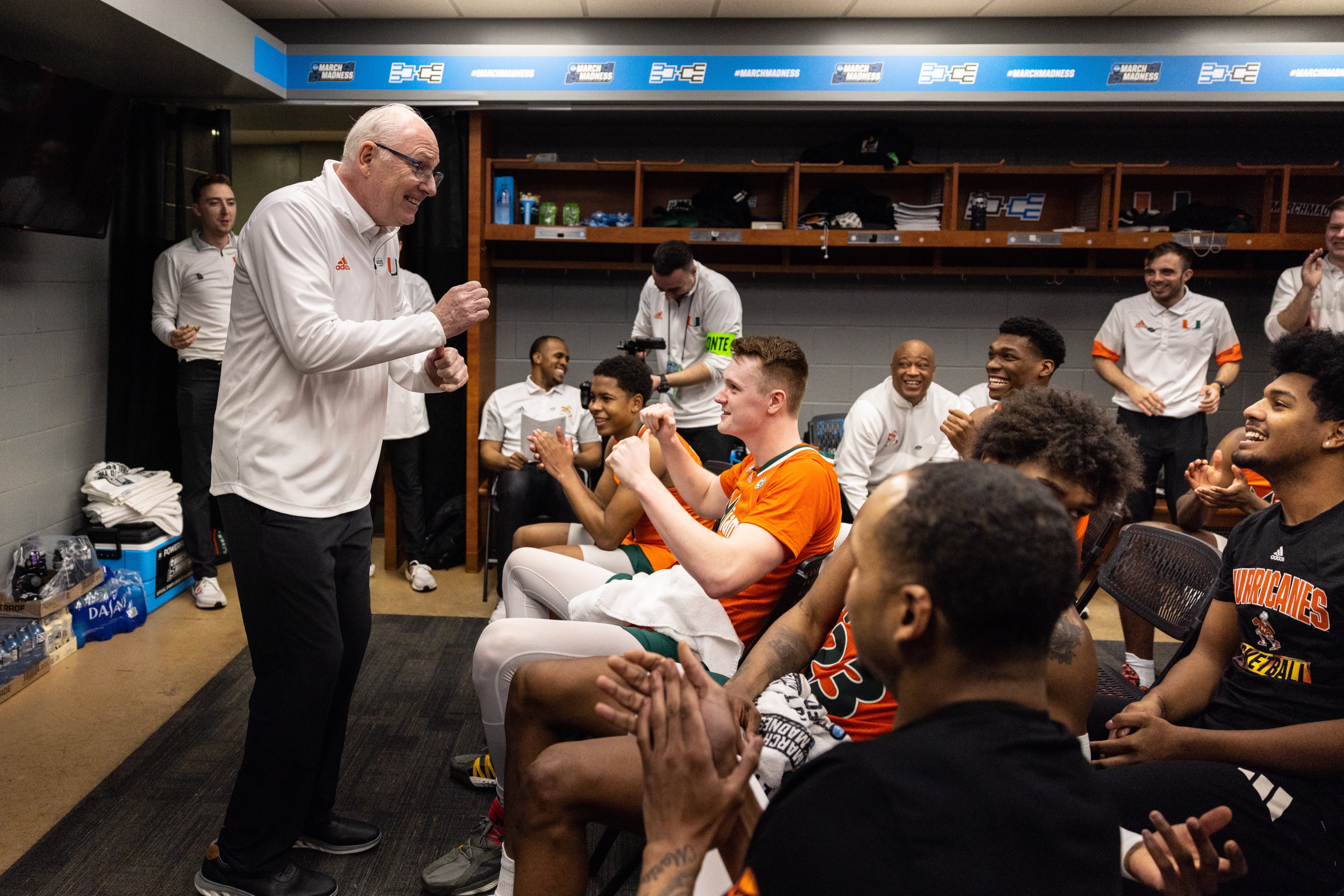CORAL GABLES, FLA- Over the course of the last month of the College Basketball regular season, how often did you see these headlines floating around?
Bracketology: ACC Having Historically Down Year, Only 4 Teams In The Field– CBS Sports, March 8th, 2022.
ACC returns to Brooklyn, not its typically strong self – Fox Sports, March 7th, 2022.
In hindsight, it’s certainly true that the Atlantic Coast Conference (ACC) had a historically bad regular season. Of the conference’s 15 teams, just nine teams owned a record of .500 or better, and only seven of those nine teams posted 20+ regular-season wins. For a conference that is typically referenced as the ‘best basketball conference in the nation’, this was certainly startling as the ACC Postseason Tournament began on March 8th. After Virginia Tech won four tournament games in four consecutive games, including an 82-67 win over No. 1 Duke in the Championship Game to clinch an automatic NCAA Tournament berth, the ACC officially landed five programs in March Programs.
Among those five programs were No. 2 Duke, No. 8 North Carolina, No. 10 Miami, No. 11 Virginia Tech, and No. 11 Notre Dame, with the Fighting Irish slated as a “Last Four In Team”. Despite the Big Ten (9 teams), Big East (6 teams), Big 12 (6 teams), and SEC (6 teams) all sending more teams to the NCAA Tournament than the ACC, it may be important to look at Quality, rather than Quantity. With the Round of 64 and 32 officially over, the ACC is actually tied with the Big 12 with the most teams in the Sweet 16, at three. Of these three teams, Duke, North Carolina, and Miami are all still dancing after the first weekend thanks to marquee wins.
Against All Odds, Miami Pulled Off An Incredible One Year Program Turnaround
No one expected the Hurricanes to be in this position. In fact, most analysts thought the opposite, as Miami was projected to finish 12th in the ACC Standings. This was expected after a 10-17 (4-15 ACC) 2020-2021 season. Against all odds, the Hurricanes finished the 2021-2022 regular season at 22-9 (14-6) and became one of 16 Division I teams that improved its winning percentage by at least 32 percent from the previous season. The massive improvement gave the Hurricanes the No. 4 Seed in the ACC Tournament, where they would advance to the ACC Semifinals before losing to No. 1 Duke. From that point, Miami has played its best basketball, which was evident in the Hurricanes’ pair of upset NCAA Tournament wins against No. 7 USC and No. 2 Auburn. With the unexpected success that Miami has had in the Tournament, how did the Hurricanes get here?
1. Miami Found their Offensive and Defensive Identity

“We basically implemented a five-out offense and a scramble defense to give ourselves the best chance” Miami’s Larrañaga said. “Once the players kind of adopted that style and become proficient at it, it gave us the best chance for success. To finish fourth in a very competitive ACC, I think, was a tremendous accomplishment for this team.”
Miami’s Tournament Success With Their New Offensive and Defensive Identities
The success of the four-guard and one-forward lineup for Miami can hardly be overstated, as they ran that exact starting lineup against the Trojans and Tigers. In the round of 64, the guard-heavy lineup of Charlie Moore, Kameron McGusty, Isiah Wong, Jordan Miller, and Sam Waardenburg just outplayed the paint-oriented Trojans. While each of the five starters has different strengths and weaknesses, each player is able to help another struggling Hurricane.
For example, Miller and Waardenburg both struggled on the offensive end, notching six and five points respectively. In response to this, Wong picked up the slack and posted a team-high 22 points and went 7-12 (58.3%) from the field. When Wong eventually picked up his fifth foul, Miami seemed to have just lost their offensive firepower, but the damage was mitigated from Moore’s 16 points and McGusty’s 12 points. Moore also added two clutch free throws with three seconds left to give the Hurricanes the last laugh over USC.
Miami’s use of a scramble defense also proved to be successful, as the Hurricanes held USC’s leading scorer Isaiah Mobley to 11 points on 3-11 (27.2%) shooting from the field. Miami was even able to force many USC mistakes, as the Trojans committed 16 personal fouls and 18 turnovers, while the Hurricanes just had 14 personal fouls and three turnovers.
2. Miami’s Roster is Filled with Experienced and Mature Veterans
In college basketball, having players on your team that has accumulated lots of experience over their collegiate career is quite a rarity. Due to this, it shouldn’t come as a surprise that many of the Sweet 16 teams have their share of likely “one and done” prospects on their roster. The most notable players include No. 1 Gonzaga’s Chet Holmgren, No. 1 Arizona’s Bennedict Mathurin, and No. 2 Duke’s Paolo Banchero and AJ Griffin, who all figure to be lottery picks in the 2022 NBA Draft.
Despite this, there’s just something when watching the senior players lead their team on a deep run in the tournament. For example, No. 2 Villanova’s Collin Gillespie has undergone a turbulent collegiate career, as he suffered a torn MCL in his senior season. Despite this, Gillespie has come back even stronger, averaging 14.0 PPG, 3.3 RPG, and 4.6 APG, and has the Wildcats in a great position to advance to the Elite Eight. Gillespie isn’t the only senior that has led his team through the tournament, as No. 1 Kansas’ Ochai Agbaji, No. 4 Arkansas’ JD Notae, and No. 11 Iowa State’s Izaiah Brockington have done the same.
While the level of experience varies from team to team, it’s hard to find a more experienced tournament team than Miami. To clarify, starting players Moore, McGusty, and Waardenburg are all Sixth-Year Redshirt Seniors, and have each reached March Madness previous to joining the Hurricanes. In actuality, the average age of Miami’s starting lineup (23.0) is older than those of the Oklahoma City Thunder (21.8) and Orlando Magic (21.4). In modern college basketball, the notion of reloading the roster every year with five-star prospects just isn’t sustainable for success in March Madness, and it seems like Larrañaga and the Hurricanes have figured this out.
3. Miami Took Advantage of All of the “Easy” Conference Wins
The most obvious reason that led to Miami’s success was their inferior conference opponents. This ultimately allowed the Hurricanes to gain steam ahead of the ACC and NCAA tournaments. Of Miami’s final 12 conference games, the Hurricanes won eight games by a considerable margin. For reference, the Hurricanes were beating their ACC foes by an average of 9.1 points, while losing by just 5.3 points. To play in many close games like they did before postseason play, that certainly showed the Hurricanes what the atmosphere would be like in March, as Waardenburg would attest to:
“We’ve played a ton of these where they come down to the last couple shots or free throws and we’re prepared, at the ACC tournament having a close one with Duke and Boston College and Syracuse before that, so we’re well-prepared for these moments and we know in March these moments do occur quite a lot so going forward we’re very confident in ourselves that if these moments come about, we’re ready for them and take it on.”
This proved true as Miami found itself tied with USC at 68 with three seconds left. Fortunately for the Hurricanes, Moore drew a shooting foul from Ethan Anderson. From there, Moore calmly sank a pair of free throws for the 68-66 win. It’s truly moments like this and the tournament run that Miami is on to prove just how important having a well-experienced roster, along with a concrete identity on both ends of the floor.

